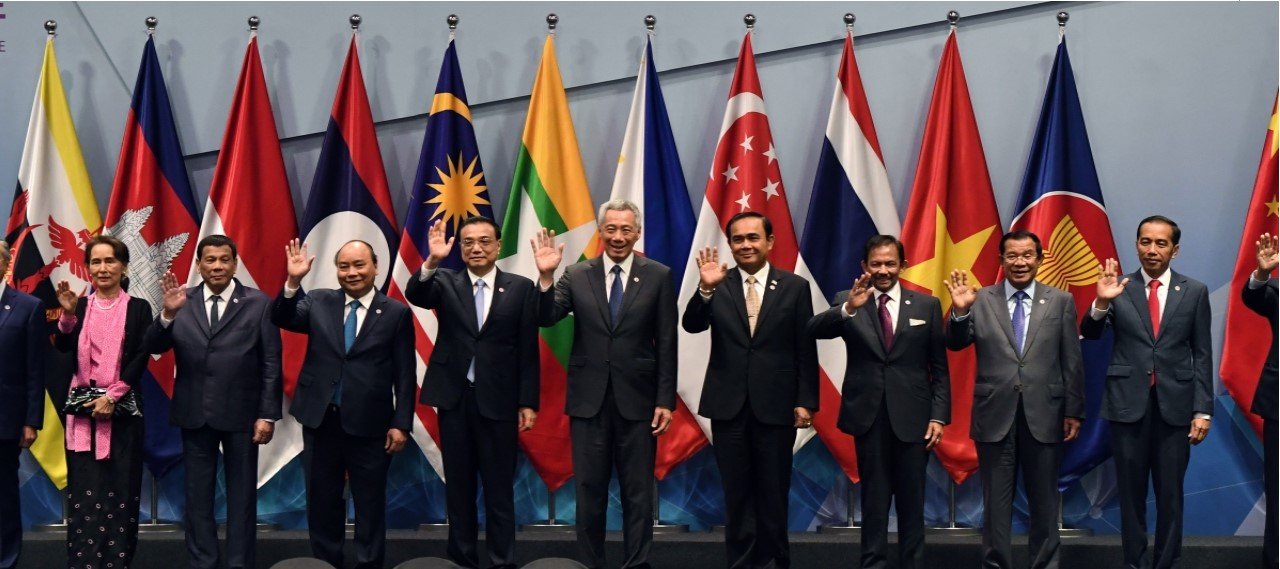

Nov
It is close to impossible for China not to have some kind of a relationship with the Association of Southeast Asian Nations (ASEAN, for the sake of convenience) in light of the fact that it shares deep ties with its 10 member states, which range from historical and cultural to more pragmatic geographical and economic ones.
With a combined GDP in the $3 trillion zone across its member nations and a combined population of close to 650,000,000, ASEAN as a group can be considered the #5 largest economy worldwide in nominal terms. For this reason alone, this entity cannot and should not be ignored by investors in general and, of course, investors who are interested in “all things China” in particular.
Established back in 1967 through the Bangkok Declaration, there were initially five founding members: Thailand, Malaysia, Indonesia, Singapore and the Philippines. In light of the fact that the association was established during the Cold War, it should come as no surprise that one of the main initial goals revolved around curbing the regional spread of communism as well as easing the tensions between nearby nations which invariably manifested themselves, especially at that particular point in time.
However, the ASEAN relatively quickly moved on from an anti-communism-oriented scope, with even communist and “relatively” communist nations being added to the mix, such as Vietnam in 1995, Laos in 1997 and Cambodia in 1999. Aside from these eight nations, it is also worth pointing out that Brunei was included in 1984 and Laos joined in 1997. All in all, a grand total of 10 countries are currently ASEAN members.
China’s perspective with respect to the ASEAN has been and is… well, complex. As the economy of China grew and as its geopolitical interests were altered by this trajectory, the ASEAN dynamic invariably adapted as well.
Let’s just say the relationship between the two entities had its ups and downs, a relationship which informally started in 1991 (when Malaysia facilitated a bit of a “first contact” experience between the then-politically-isolated China and the ASEAN) and became formal in 1996, through the Dialogue Partnership which was established.
We need to understand the context at that point in time, with a politically-isolated China being eager to focus on economic ties so as to alter that status quo. Breakthroughs such as the ACFTA (ASEAN – China Free Trade Agreement) enabled it to do just that in 2002, approximately one year after another (this time global) breakthrough for China, joining the World Trade Organization.
As time passed, the China – ASEAN economic ties became more and more significant, with China finding it convenient to negotiate with a large bloc on the one hand but on the other hand, due to the rotating nature of ASEAN leadership, also understanding the intricacies of regional politics on a country-to-country basis.
However, tensions inevitably manifested themselves.
A textbook example to that effect is represented by the 2012 incident, when for the first time, a joint statement was not delivered after the ASEAN Foreign Ministers Meeting due to issues which pertained to… as some readers might have guessed, South China Sea-related disputes. Needless to say, while this may not sound all that alarming to the average observer, any failure to deliver some kind of a joint statement represents a significant setback in diplomatic terms.
The best manner in which the China – ASEAN relationship could be summed up would most likely be this: a relationship in which the economic dimension is more than compelling and further progress in this respect seems almost inevitable, but with geopolitical tensions which revolve around sensitive topics such as the South China Sea dynamic proving to be problematic every now and then. In fact, there are even territorial issues between ASEAN members themselves, for example the border problem between Thailand and Cambodia, Malaysia and the Philippines not seeing eye to eye with respect to the North Borneo issue. The South China Sea dynamic does not represent an exception, with Malaysia, Vietnam, Brunei and the Philippines representing geopolitical “adversaries” to a certain extent (when geopolitical conditions dictate it), perhaps even Indonesia.
As an investor who already has exposure to Chinese assets or is interested in gaining exposure to Chinese assets, wrapping your head around regional geopolitics is a must. Why? Simply because a country can be only one geopolitical faux pas away from economic or even military escalation and the same way, it can be only one breakthrough away from increased cooperation. And as far as the idea of being an observer of China is concerned, wrapping your head around regional geopolitics without including the ASEAN variable in your equation is pretty much impossible.
As difficult as it may seem, you will eventually realize that the more time you spend on ChinaFund.com, the more it seems that it all makes sense, as the various pieces of this seemingly overly-complicated but actually quite logical puzzle come together. If you are in need of assistance with a geopolitical report or any kind of regional insight, simply get in touch by visiting the Contact section of ChinaFund.com and we will do our best to help.
